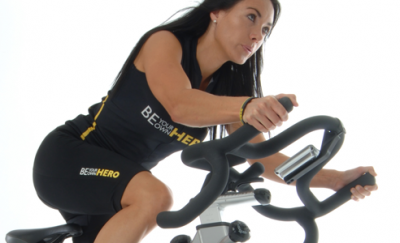
By ICG® Master Trainer Joan Kent
The word “technique” may inspire interest in some and yawns in others. Still, there”™s much to be said for technique, since it”™s the foundation for the athletic performance features we layer over it.
Technique involves primarily the improvement of the skills required for a task. In the broadest general (i.e., non-cycling-specific) terms, it entails eliminating unnecessary movement and muscle activity; making all movements in the correct directions; applying the necessary power, but no more than that; using muscles best suited to the activity; and using optimal speed if time isn't a factor.
However dry and artless the list may sound, the results of good technique, and the consequences of bad, extend to training and performance. The last thing I”™m going to do is provide guidelines for cycling technique, since so many vastly superior riders have done that in so many venues. (You can check out the excellent videos on the ICG® web site or here on ICI/PRO.)
What I”™d like to do is simply list some benefits of improving technique.
The main benefit of good technique is that it improves efficiency. Efficiency is the ratio of work output to expended energy. If output increases or expenditure decreases, efficiency has improved. Efficiency and technique are closely related because the principles of efficiency are similar to those of technique: muscle relaxation whenever possible; vigorous contraction only when necessary; use of largest muscles possible to avoid local fatigue; use of momentum unless it must be overcome by muscular effort; use of smooth, continuous motions and easy, natural rhythm versus sudden, sharp, linear motions or contraction of opposing muscles against each other.
Efficiency may hinge on factors other than technique, such as training. Efficiency may depend on the contractile properties of the muscle, with slow-twitch more efficient than fast-twitch. Training can increase strength and endurance significantly by increasing efficiency of muscle utilization. Big-gear training, as discussed by Jim Karanas in a recent audio profile and by Tom Scotto in a recent post, can improve efficiency in fast-twitch fibers.
Returning to technique, many activities have an optimal rate; rates above and below it expend greater energy. The mechanism behind this is stored muscle elasticity, which requires the shortest interval between muscle relaxation and contraction to prevent loss of kinetic energy as heat. Technique changes how much energy is lost as heat and how much is retained as mechanical energy for the next movement. Since practice reinforces good technique, it can improve cycling efficiency by reducing the energy required to perform the pedal stroke, reducing energy lost as body heat, and retaining more mechanical energy for the next pedal stroke.
Efficiency is also affected by consistent velocity. Unnecessary acceleration and deceleration, often due to poor technique, waste energy. Obviously, keeping a consistent cadence throughout a cycling class isn”™t usually part of the workout plan; however, staying consistent during a particular song or segment — an important technical skill — may increase efficiency. Beatmatch, as detailed by Team ICG® in a recent post on music, is an excellent practice tool in developing technique for consistency and efficiency.
Anecdotally, we also find that doing something with correct technique feels good, probably because the body is being used per the two sets of principles described above.
Finally, correct technique makes the student look good. In my master”™s thesis, I compared the principles of technique and efficiency to those of movement aesthetics. It turns out that what makes a movement correct and efficient is also what makes it beautiful.
So technique is a key factor in efficiency, which in turn influences energy. The less energy a student wastes cycling with bad technique, the more energy is left for the demanding sections of the class when it really counts. And the better the student will look and feel doing it. Who can argue with having a beginner complete the class, look and feel good while taking it, and come back for more?
- New Year’s Resolutions: A Sugar Addict’s Survival Guide - April 15, 2024
- Motivation vs. Enthusiasm - October 12, 2023
- Why Exercise Shouldn’t Be Just One Thing - November 9, 2022

Thanks for this Joan – love it 🙂
As a long time cyclist, how you look on the bike is important to me and you are very right – when your technique is correct you are (and look) strong.
Thanks, John. Of course, I agree with you. The look of a movement was important when I was studying and teaching dance, but the principles carry over to cycling completely. I’m not sure any comment is more encouraging to a new student than, “Now you look like a cyclist.”